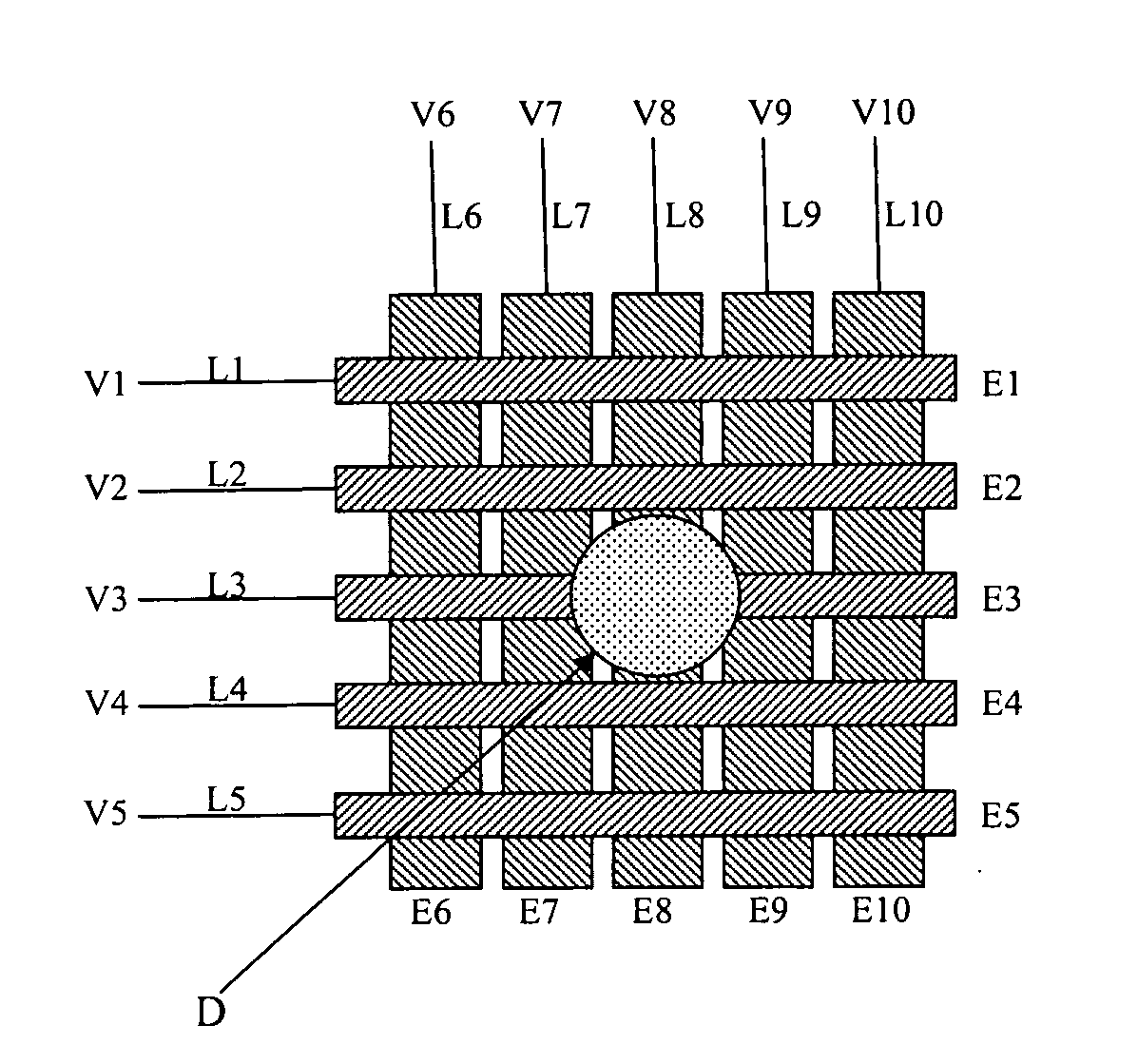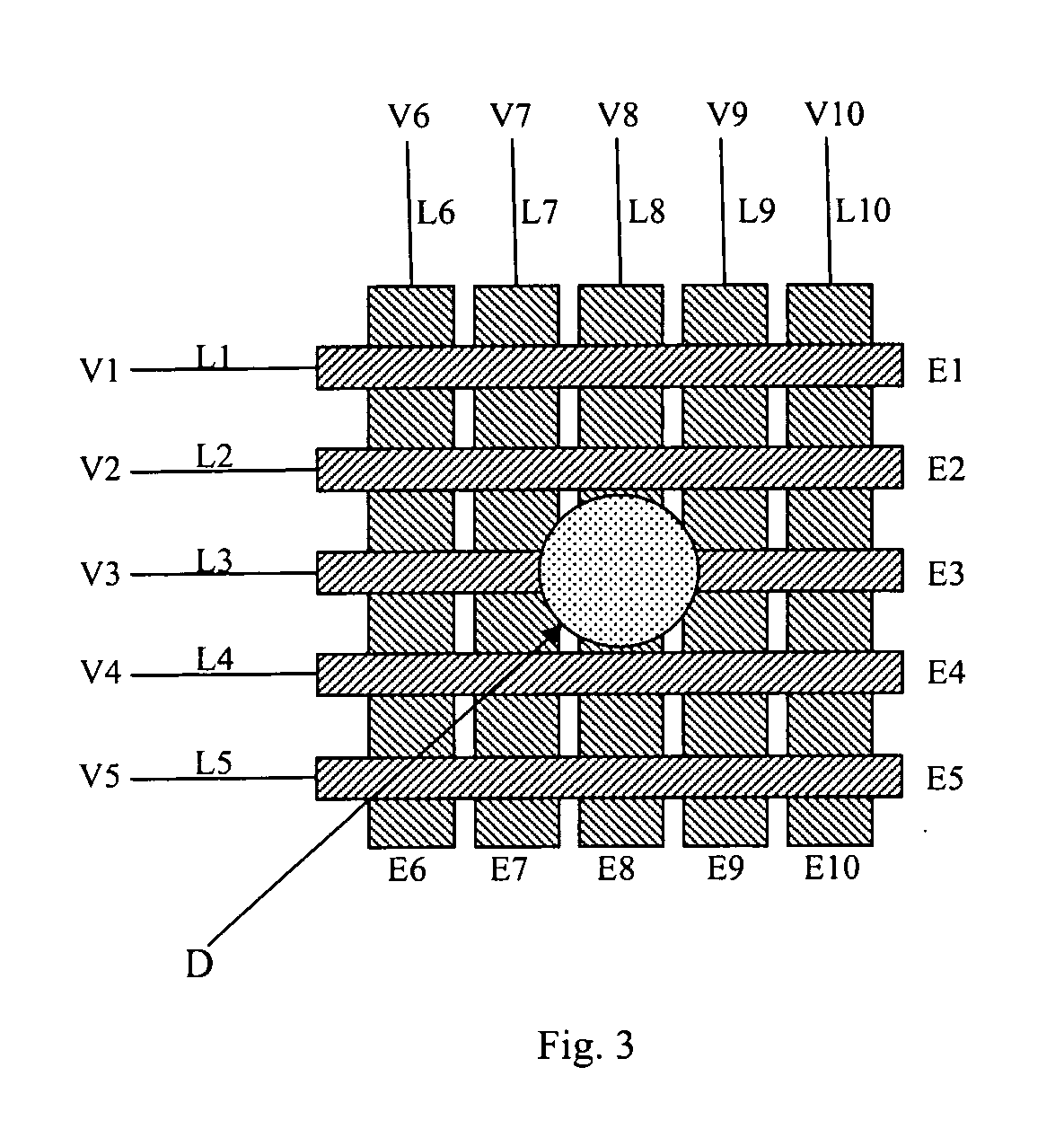Electrowetting based digital microfluidics
a digital microfluidic and electro-rowetting technology, applied in the field of liquid droplet manipulation, can solve the problems of difficult design of difficult to implement universal chip format, and difficult to design a low-power self-contained system based on this architectur
- Summary
- Abstract
- Description
- Claims
- Application Information
AI Technical Summary
Benefits of technology
Problems solved by technology
Method used
Image
Examples
example 1
Droplet-based Sampling and Processing
[0058]Referring now to FIG. 10, a method for sampling and subsequently processing droplets from continuous-flow liquid input sources 91 and 92 is schematically illustrated in accordance with the invention. More particularly, the method enables the discretization of uniformly sized sample droplets S from reservoir 91 and reagent droplets R from reservoir 92 by means of electrowetting based techniques as described hereinabove, in preparation for subsequent droplet-based on-chip and / or off-chip procedures, such as mixing, incubation, reaction and detection, etc. In this context, the term “continuous” is taken to denote a volume of liquid that has not been discretized into smaller volume droplets. Non-limiting examples of continuous-flow inputs include capillary scale streams, slugs and aliquots introduced to a substrate surface from dispensing devices. Sample droplets S will typically contain an analyte substance of interest (a known molecule whose ...
PUM
 Login to View More
Login to View More Abstract
Description
Claims
Application Information
 Login to View More
Login to View More - R&D
- Intellectual Property
- Life Sciences
- Materials
- Tech Scout
- Unparalleled Data Quality
- Higher Quality Content
- 60% Fewer Hallucinations
Browse by: Latest US Patents, China's latest patents, Technical Efficacy Thesaurus, Application Domain, Technology Topic, Popular Technical Reports.
© 2025 PatSnap. All rights reserved.Legal|Privacy policy|Modern Slavery Act Transparency Statement|Sitemap|About US| Contact US: help@patsnap.com



